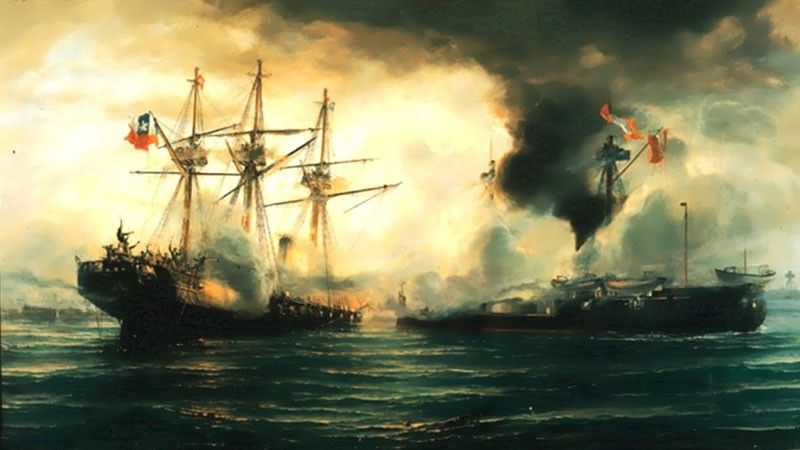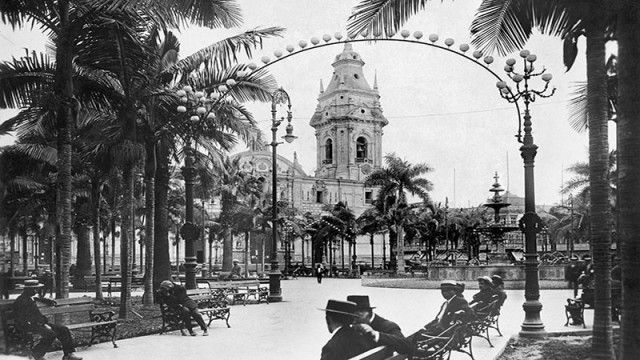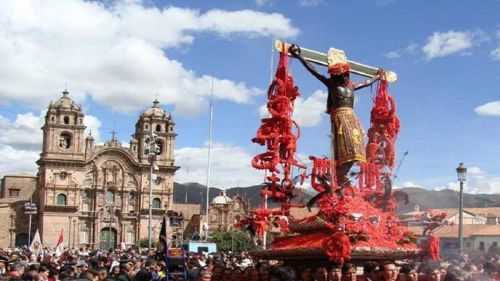The War of the Pacific, also known as Saltpeter War or Ten Cents War, arose from a dispute between Chile and Bolivia over valuable mineral deposits in the Atacama Desert.
Background information
While back then clear national borders weren’t definitively established after independence, the disputed part of the Atacama Desert which held large valuable nitrate and guano deposits (used as fertilizer and exported to Europe) belonged to Bolivia, the mines exploiting the mineral resources however were owned and operated by Chile; export taxes were shared. The details were defined in the Boundary Treaty of 1866.
Becoming unhappy with the agreement and fearing a Chilean seizure of the territory, Bolivia signed the secret Treaty of Defensive Alliance with Peru in 1873 (see the previous chapter of Peru's history "Early Republican times in Peru"). However, a year later Bolivia and Chile revised their Boundary Treaty and Chile gave up its share of export taxes on minerals shipped from Bolivia, while Bolivia agreed to not raise taxes on the Chilean mining companies in Bolivia for 25 years. Then in 1878 the Bolivian government imposed the controversial ten-centavo tax on the Chilean Antofagasta Nitrate Company.
Beginning of the War of the Pacific 1879
Chilean protests resulted in Bolivian threats to nullify the company’s exploitation license and confiscate the assets, which lead to Chilean forces occupying the Bolivian port city of Antofagasta in February 1879. While Peru tried to mediate between the two countries, Bolivia declared war on Chile and expected its ally Peru to join. Chile, on the other side, called upon Peru to remain neutral and declared war on both Peru and Bolivia in April 1879 after Peru declared its alliance with Bolivia. The war was on.
At first glance, none of the three countries seemed to be militarily or financially prepared for the war. The Peru - Bolivia alliance seemed to have an advantage over Chile because of the number of troops and the powerful artillery of Callao's port. However, they were weakened by domestic disputes since independence, poor planning and administration as well as a neglected military with Bolivia not even having a navy. On the other side, the Chileans had a stable and well-organized political system for decades and a professional and well-equipped army and navy in place. It became evident quickly that the allies couldn’t keep up with Chile.
Sea battles
After easily gaining control over the Bolivian Antofagasta province, the Chilean forces pressed on, taking the more powerful Peru under fire. A sea battle erupted in which Peru suffered a series of defeats, for example during the Battle of Iquique (May 1879) and the famous Battle of Angamos (October 1879) which earned Chile naval supremacy and the control of the sea access to Peru.
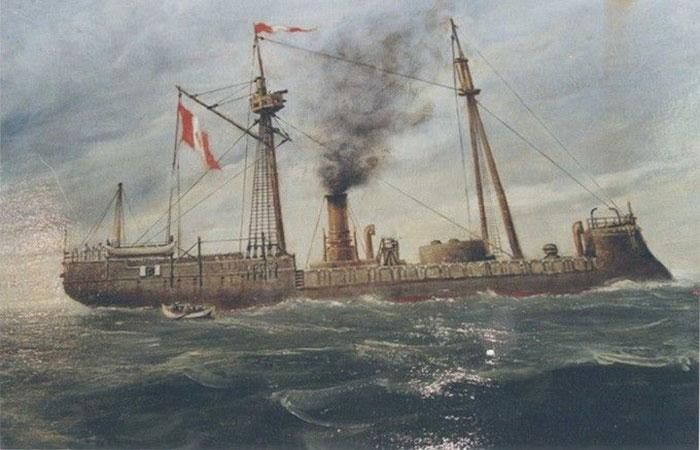
Land war
The war then continued on land. In four military campaigns, Chile took control over strategic and economically important areas of Peru. First the Tarapaca region, an area in southern Peru rich in mineral resources and an important source of revenue, and the port of Iquique, was invaded.
Then in early 1880 Chile advanced to the Tacna-Arica region which fell to Chile after the Peruvian and Bolivian armies were nearly completely destroyed in the Battle of Tacna (May 1880) and the Battle of Arica (June 1880). Bolivia surrendered at that point, however only days later the Bolivian National Assembly voted to continue the war and the creation of the United States of Peru-Bolivia was declared. In October 1880 the Arica Conference (also known as Lackawanna Conference after the USS Lackawanna on which it was held), a mediation attempt by the United States to develop a peace settlement between Chile, Bolivia and Peru failed. And even though by now it was clear that neither Peru nor Bolivia possessed the military power anymore to defend its territories, nothing could convince them to cut their losses and come to a peace agreement acceptable for both sides.
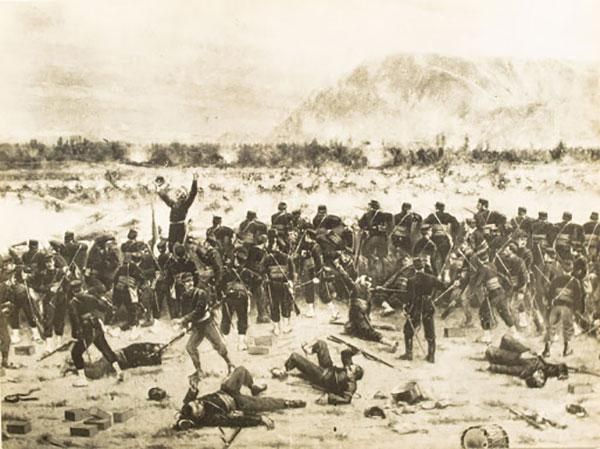
So, Chile reinforced its troops and by January 1881 marched towards Lima. The Peruvian army (without proper equipment, training, and budget) and poorly armed militias set up to defend the Peruvian capital. However, Peruvian forces were defeated in literally every single confrontation, with the lost Battle of San Juan and Chorrillos and the lost Battle of Miraflores being decisive for Chilean troops invading the capital and taking control. Thousands of Peruvian men were killed, lots more badly wounded. The city and the upscale beach areas of Miraflores, Barranco and Chorrillos, were looted and valuable historical and cultural objects stolen. After the plundering many buildings including the famous National Library and many churches were burnt to the ground. Civilians were forced to surrender all their valuables. And even most of Lima’s surrounding haciendas were plundered and then burnt down to ashes. Still, Peru couldn’t be convinced to surrender or at least begin some sort of peace talks. The Peruvian government, the caudillos (former military leaders) and some of Lima’s old-established nobility retreated to the Peruvian Sierra (Andean mountains region). After two more years of Peruvian resistance and guerilla warfare, the war between Chile and Peru officially ended with the signing of the Peace Treaty of Ancon in October 1883. A few days later, the Chilean troops left Lima.
Consequences of the War of the Pacific
While Chile gained enormously from the War of the Pacific, Peru and Bolivia suffered badly. Bolivia lost its entire coastal territories (Antofagasta province), with its nitrate, copper, and other mineral resources to Chile and with this its direct access to its major port of Antofagasta and the Pacific Ocean. The country is landlocked ever since. Peru on the other hand lost thousands of lives, its best warships, countless other treasures, the complete mineral rich Tarapaca province and for 10 years the provinces of Tacna and Arica. After the 10 years a plebiscite was supposed to be held to determine if Tacna and Arica are returned to Peru or remain Chilean.
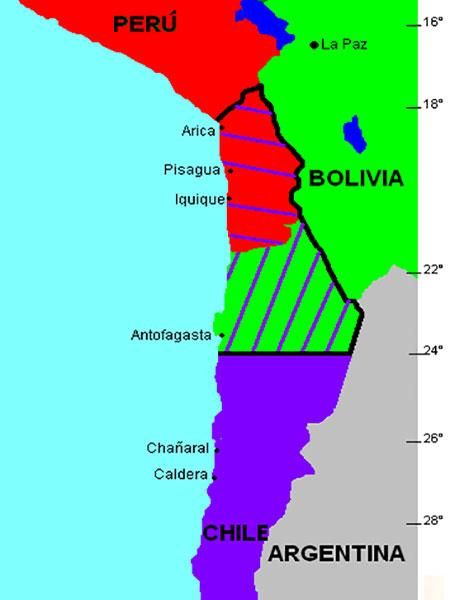
But for decades the two countries couldn’t agree on the terms of the referendum. Only in 1929, through the mediation of the United States, an accord was reached in the Treaty of Lima: Chile kept Arica and Peru reacquired Tacna. However, the matter still wasn’t closed completely. Outstanding issues between Chile and Peru continued for over a century and were only settled in the 1990s, with both countries still being in dispute over the sea boundaries. To peacefully solve the conflict, Peru invoked the International Court of Justice in The Hague. Finally, at the beginning of 2014 the court decided on that matter and found a compromise both sides are more or less ok with.
Nevertheless, Peru’s defeat in the War of the Pacific, its territorial losses, the extensive looting of Peruvian cities by Chilean troops and the partly inhuman and barbaric treatment of civilians left deep scars and resentment towards Chile which to this day remain.


